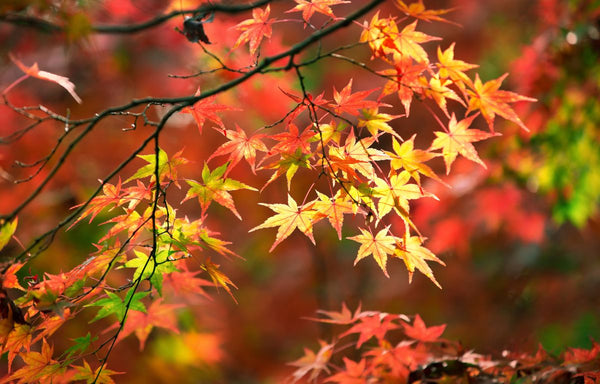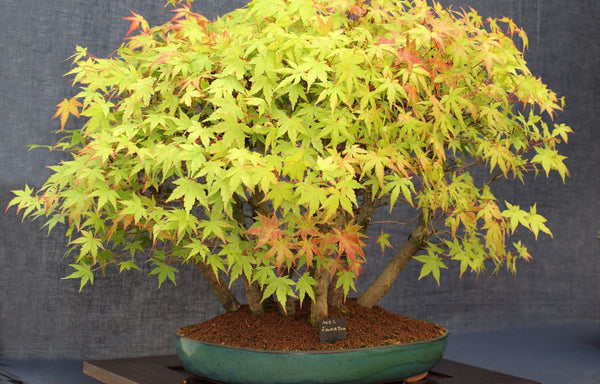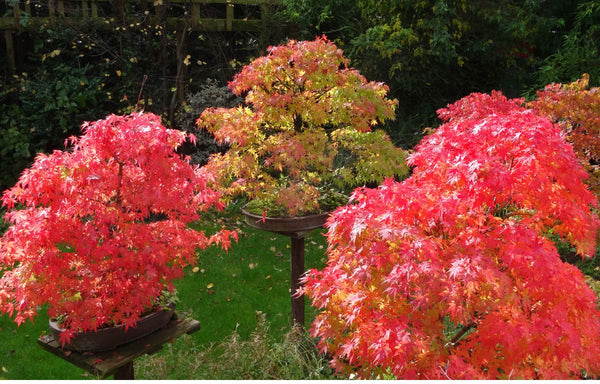
Add A Touch Of Elegance With A Japanese Maple, Acer palmatum
Add A Touch Of Elegance With A Japanese Maple, Acer palmatum
Japanese Maples have been lovingly cultivated in Japan for many centuries, so much so, that they even have a specific name for the autumn leaf colour change from greens to red tones known as Momiji. Due to their striking appearance and iconic finger-shaped leaves, Japanese Maples have since become beloved ornamental trees, adding a touch of elegance to public and domestic gardens and landscapes all around the world.

Japanese Maples were introduced to Australia, along with other parts of the world, through international plant trade and horticultural exploration in the 19th and 20th centuries. While they require care and attention, Japanese Maples are relatively low maintenance compared to some other ornamental trees and are not prone to severe pest or disease issues. With an extensive lifespan and proper care, Japanese Maples can thrive for decades in most climates across the country.
Potted Japanese Maples
Although they are full-sized trees, Japanese Maples are extremely slow-growing. This, along with their hardy nature, makes them a go-to favourite for ornamental feature pot growing and bonsai cultivation.
Japanese Maple generally prefer wider pots over deep pots. These trees have a shallow root system, and wider pots provide more room for their roots to spread out horizontally, allowing for better root development and moisture retention while maintaining the tree's overall balance and stability.
A suitable pot size should be roughly 600mm in diameter or a container volume between 50-75 litres with adequate drainage holes to prevent water from accumulating. Having said this, Japanese Maples prefer a snug-fitting pot, so if the trees are still young, the pot sizes should be no more than double that of their root balls. If there is too much space in between the roots, there is a chance that the Maples can go into pot shock or stress.

Caring For A Potted Japanese Maple
Sunlight and Positioning: Japanese Maples prefer a sheltered location with dappled or filtered sunlight to protect them from harsh afternoon rays. Position the pot to shield the Maples from strong winds, which can dry out the foliage and damage delicate branches.
Temperature: Japanese Maples tend to thrive in cooler climates, with an ideal temperature range between 13-24°C. However, they are fairly tolerant of cold and hot conditions. During summer, ensure partial shade and adequate hydration to prevent stress from strong, direct sunlight. Similarly, make sure Japanese Maples are sheltered by structures or coverings to avoid damage from blustering cold winds and severe frostbite.
Soil: Japanese Maples do well in most soil composites including clay and sand-heavy mixtures so long as the pH is neutral to slightly acidic. It is vital that the soil is well-draining and loose. Well-aerated soil aids with healthy root development. Applying mulch on top of the soil and around the trunk provides insulation and better regulates soil moisture and temperature.
Watering: Watering Japanese Maple trees should be consistent but not excessive. Ensure the soil remains evenly moist, avoiding waterlogged conditions that can lead to root issues. Water deeply when the top 5-10cm of soil feels dry. Regularly monitor soil moisture to maintain healthy potted Japanese Maples, especially during extreme weather conditions. Be mindful that soil inside of wide and shallow pots tends to dry out faster than soil inside of deeper ones.
Fertilisation: The best time to fertilise Japanese Maples is in late winter to early spring, typically around late August to early September. This is when they are coming out of their winter dormancy and entering their active growth phase. Adequate and timely fertilisation around this time of year will provide the necessary nutrients to thrive and display their beautiful leaves for longer.
Pruning: Regularly prune and shape Japanese Maples to maintain their size and appearance. Many gardeners tend to prefer the traditional domed canopy style. Remove dead or diseased branches and thin out crowded growth to improve airflow and sunlight penetration.
Repotting: Japanese Maple species, Acer palmatum, are full-sized trees that can grow upwards of 7-8 meters in height and width. Because of this, they will need to be repotted every 2-3 years as the plant ages. The best time to repot Japanese Maples is during their dormant phase around late autumn and winter. This is when the roots have slowed growth for the season, reducing the amount of stress placed on the plant as it is removed from its old home and into its new one.
Japanese Maples can be kept in their original pots but to do this, the trees growth must be contained. The only way to do this is by trimming the roots and temporarily reducing the Maples's ability to absorb nutrients, oxygen and water from the soil. Root trimming will need to be redone every couple of years as they grow back.
Propagation: Although the foliage is what makes Japanese Maples so popular, they do produce tiny winged fruits called Samaras or helicopter seeds, that can be seed propagation. However, cutting propagation can also be from a healthy parent Maple during early summer. The cuttings should measure around 10-15 centimetres in length.

Problems and Solutions
Drying Out: Potted Japanese Maples can dry out quickly, especially in warm weather or when exposed to strong winds. Ensure regular and consistent watering. Consider using self-watering pots to maintain moisture levels or a slow drip irrigation system provided that the soil is regularly checked for waterlogging.
Root-Bound: Also known as pot-bound, root-bound occurs when the roots of Japanese Maples become too large for their pots and can no longer expand and absorb nutrients, oxygen and water from the soil. Root-bound plants often exhibit signs of severe stress such as little or no foliage production, defoliation, and slow or stunted growth. The best way to check if Japanese Maples are root-bound is to test the density of the soil by poking a finger or gardening tool into the soil. In shallow pots, the Maple’s roots may even protrude above the soil line.
Pest and Disease: Although they have a tolerance to most pests and diseases, Japanese Maples can still be vulnerable to common house pests like aphids, scale insects, or diseases such as powdery mildew. Regularly inspect the tree and use insecticidal soap or neem oil, and appropriate fungicides for diseases if needed.
Fertilisation Issues: Although feeding Japanese Maples supports healthy development, avoid fertilisers that contain a large volume of nitrogen as this will speed up growth and may cause the plant to become leggy and weak. Japanese Maples produce healthier and sturdier growth when they are able to grow at a slow rate. They should also not be fertilised around late summer or autumn to prevent encouraging sensitive new growth that may be vulnerable to frost damage in winter.
Overcrowding: Over time, multiple plants or excessive mulch can overcrowd the pot, limiting airflow and light. Thin out the plants or remove excess mulch to provide Japanese Maples with proper spacing and airflow.
Strong winds: Japanese Maples have thick, expansive canopies. The downside of pot planting is that the roots are not able to anchor in the way they would if planted directly into the ground. Wide pots offer better stability, reducing the risk of Maples tipping over in windy conditions.
Japanese Maples are more than just a tree; they are a living masterpiece that can be cultivated by experienced or novice gardeners alike, allowing everyone to experience the seasonal wonders of nature that are intrinsically linked to these ever-changing trees.
